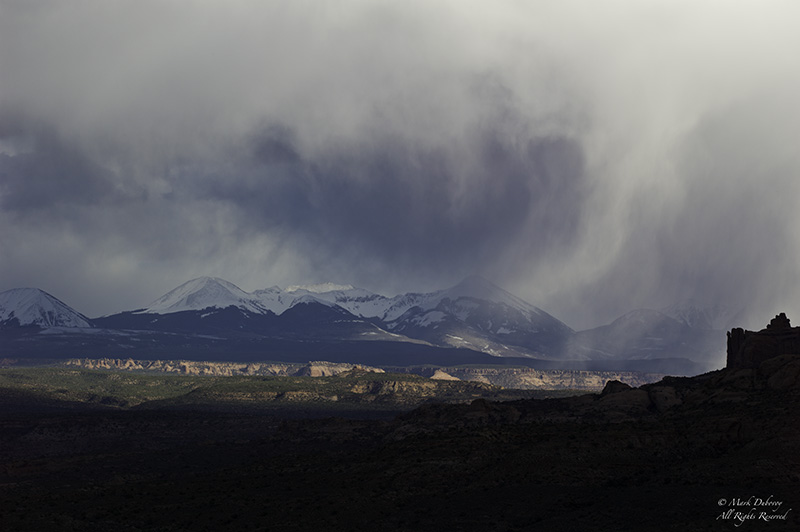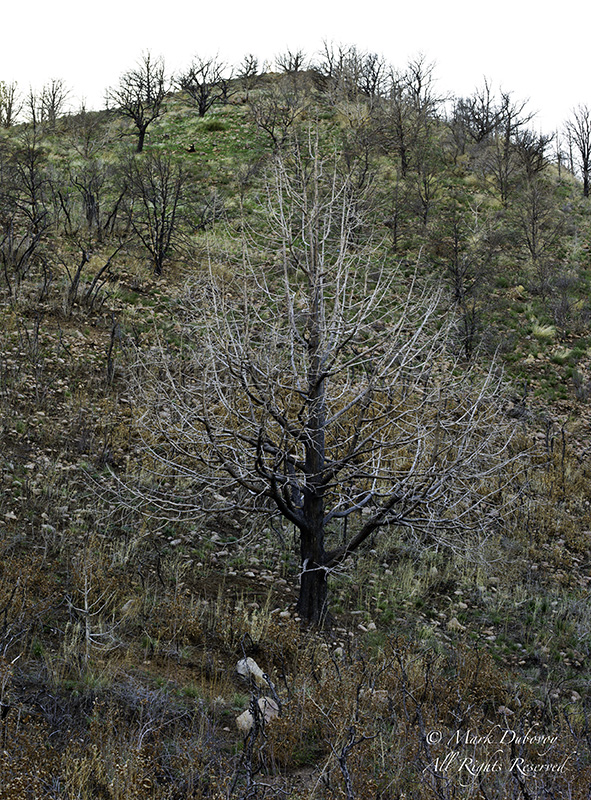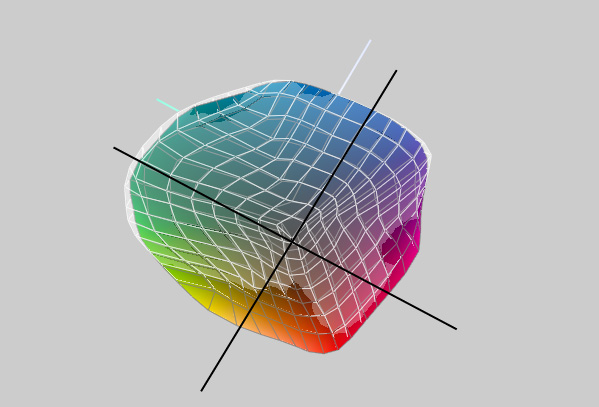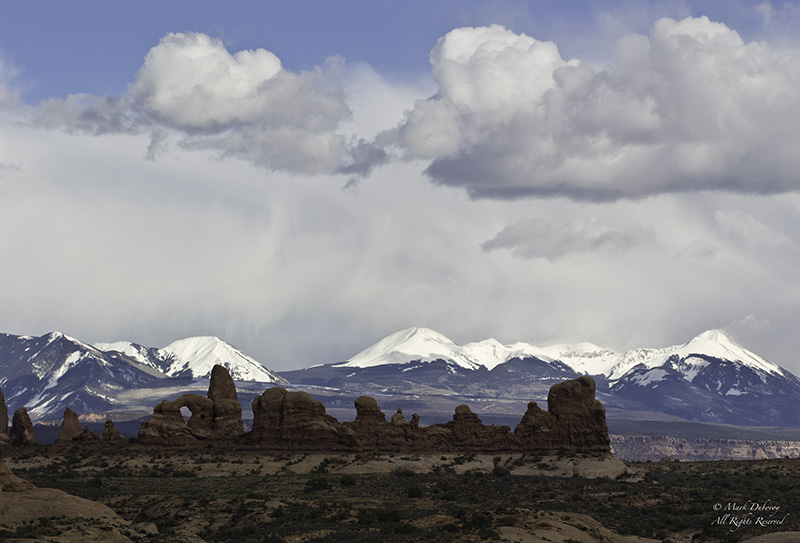
Rain Storm, Moab Utah
Leica S2, 180 mm lens
Periodic Meetings Are Good
I try to meet periodically with photographers and other people with some relationship to photography that I admire and respect. One such individual isCharles Cramer. I have always liked his photographs and I have the highest respect for him not only as an artist, but also as a technician, an instructor and an individual. I find his work not only artistically compelling, but also executed with extreme finesse and the best possible quality.
I had lunch with Charlie roughly three months ago and he brought some of his latest prints to show me. He was very excited that he was using a new paper he liked a lot. As usual with Charlie, the images and the quality of the prints were absolutely exquisite. When he mentioned the name of the paper, I almost got palpitations:Canson Infinity Platine Fibre Rag.
Why would I get palpitations over this name? Well, the reason is that the most beautiful watercolor paper (in my humble opinion) is Arches Platine. It is rumored that Michelangelo and Raffaelo used Arches Platine for their watercolors (Yes – this paper has been manufactured, apparently in basically the same way, for centuries).
The most beautiful multilayer Carbon Pigment Prints I have ever seen (including some of my own images) are printed using Arches Platine as the final substrate. This is why, the combination of the Canson Infinity name (same company that manufactures Arches), combined with the name Platine made my heart flutter.
Could this be the mother load of all papers? How could I possibly have missed its very existence?
Within less than an hour after lunch, I had placed an order for several boxes and rolls of this paper.

Tree and Triangle Hill, Near Moab Utah
Leica S2, 70 mm lens
Description
Platine Fibre Rag as the name implies, is a rag fiber based paper manufactured to the highest archival standards. It contains no brighteners.
The more I find out about brighteners, the less I want to use any paper that contains them. I recently had a long conversation on this subject withHenry Wilhelmwho is probably the top authority on conservation and all I can say is that brighteners are scary. I am trying to convince Henry to write an article for us on that topic. The issue is that he is extraordinarily busy, but I hope that eventually he will make time for us. The bottom line, however, is that if you are interested in the longevity of your prints, it is a good idea to avoid brighteners.
The paper is quite thick. It is rated at 310 gsm and has a beautiful tactile feeling. The company describes the surface as Ultra Smooth Glossy. I am not sure I would label it like that. The surface is reminiscent of an air dried glossy black and white silver gelatin paper of yore. It is somewhat different from their Baryta Photographique paper, but in the same general family.
The paper is designed to be used with Photo Black ink.
Comparison
My two favorite papers for most of my current work are Canson Infinity Baryta Photographique and Ilford Gold Fibre Silk. Therefore, I thought the easiest thing would be to compare Platine Fibre Rag to Baryta Photographique. I used an Epson 9900 printer with ImagePrint 8 for all the prints.
Figure 1 shows a comparison of the color gamut of the two papers.

Figure 1
Platine Fibre Rag Color Gamut Comparison. The White Frame represents the Color Gamut of Baryta Photographique
While the color gamut of the Platine Fibre Rag is quite good, it is definitely not as good as the color gamut of Baryta Photographique. The same holds true in a comparison with Ilford Gold Fibre Silk. Note how the Baryta papers extend further into the more saturated reds, greens, purples and blues.
The real question is whether this is noticeable in practice. The answer isyes. If you are looking for a paper with electric reds, or super saturated blues, this is not the paper for you. For example, this paper would not be my choice to print things like red sports cars, highly saturated flowers or other really deep super saturated colors.
On the other hand, if your taste leads more towards moderation and subtlety (like Charlie Cramer), this is one gorgeous paper. It renders subtle tones absolutely beautifully. After working with this paper for about 3 months now, I would almost dare say that in this regard it is second to none and might be the best in class.
Another beautiful characteristic of Platine Fibre Rag is that after printing it dries flat. What a concept! Who would object to that? It puts all other fine papers I have tested to shame in terms of its proclivity to start out flat and stay flat.

Arches and La Sal Mountains, Utah
Leica S2, 180 mm lens
Conclusion
In general, I hesitate to give absolute recommendations on specific papers, because so much depends on personal taste, the type of work being printed and the printer itself. The only way to know if you are going to like a paper is to try it.
All I can say is that based on the prints that Charlie has shown me, and my own work using the Epson 9900 with ImagePrint 8, I would rate Platine Fibre Rag as one of the most beautiful papers on the market today. It is a superb product for images that do not require extreme saturation and punch. As such, Platine Fibre Rag now joins my stable as one of my three favorite papers.
This paper almost got away, but a meeting with a great photographer and friend saved the day. Thank you Charlie!
You can read more about what makes this paper so special
in an article on Miles Hecker’s web site
June, 2011
You May Also Enjoy...
Nikon 24 mm f/3.5 PC-E Nikkor ED
Part of Nikon's resurgence during the past year was the announcement in January '08 of three new Perspective Control lenses, a 24mm f/3.5, 45mm and
Merklinger
The following letter is reproduced fromThe Luminous LandscapeDiscussion Forumwhere it was first posted. Harold Merklinger isa well regarded expert in the field of optics and
